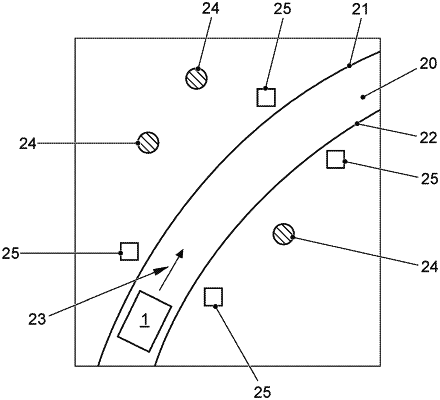| CPC G01C 21/30 (2013.01) [G01C 21/3811 (2020.08); G01C 21/3837 (2020.08); G06N 5/04 (2013.01); G06N 20/00 (2019.01)] | 11 Claims |

|
1. A method for operating a position determination system for a mobile unit that performs computational processing, the method comprising:
providing map data, which comprise position information for first landmarks of a first landmark class;
collecting environment data;
determining a position of the mobile unit;
generating and storing training data, wherein the training data is generated based on the position of the mobile unit, the collected environmental data and the position information for the first landmarks, wherein the training data is generated by performing a transformation such that the map data is in a coordinate system relative to the mobile unit, wherein portions of the collected environment data in which the first landmarks of the first landmark class are located are determined based on the position information for the first landmarks included in the environment data, whereby subsets of the collected environment data that include the first landmarks are determined and stored as the training data; and
generating a first detector module for detecting the first landmark class based on the training data,
wherein the first detector module is implemented in the mobile unit's computational processes,
wherein the generation of the first detection module is performed via a machine learning procedure that includes determining a correlation for the training data and testing the determined correlation to determine whether the correlation exceeds a threshold value, defined for evaluation of quality of the environment data to exclude environment data with insufficient recording quality and to ensure that the training data is generated based on environment data that is recorded at multiple locations, from multiple perspectives relative to landmarks and under multiple weather conditions,
wherein the correlation indicates patterns detected in different portions of the environmental data that include the first landmarks of the first landmark class, and
wherein the machine learning procedure uses pattern recognition to compare portions of the environment data that include the training data with each other and with negative examples without the first landmarks to determine correlations to ensure reliable recognition of the first landmarks as well as reliable recognition of environment data where the first landmark does not exist.
|